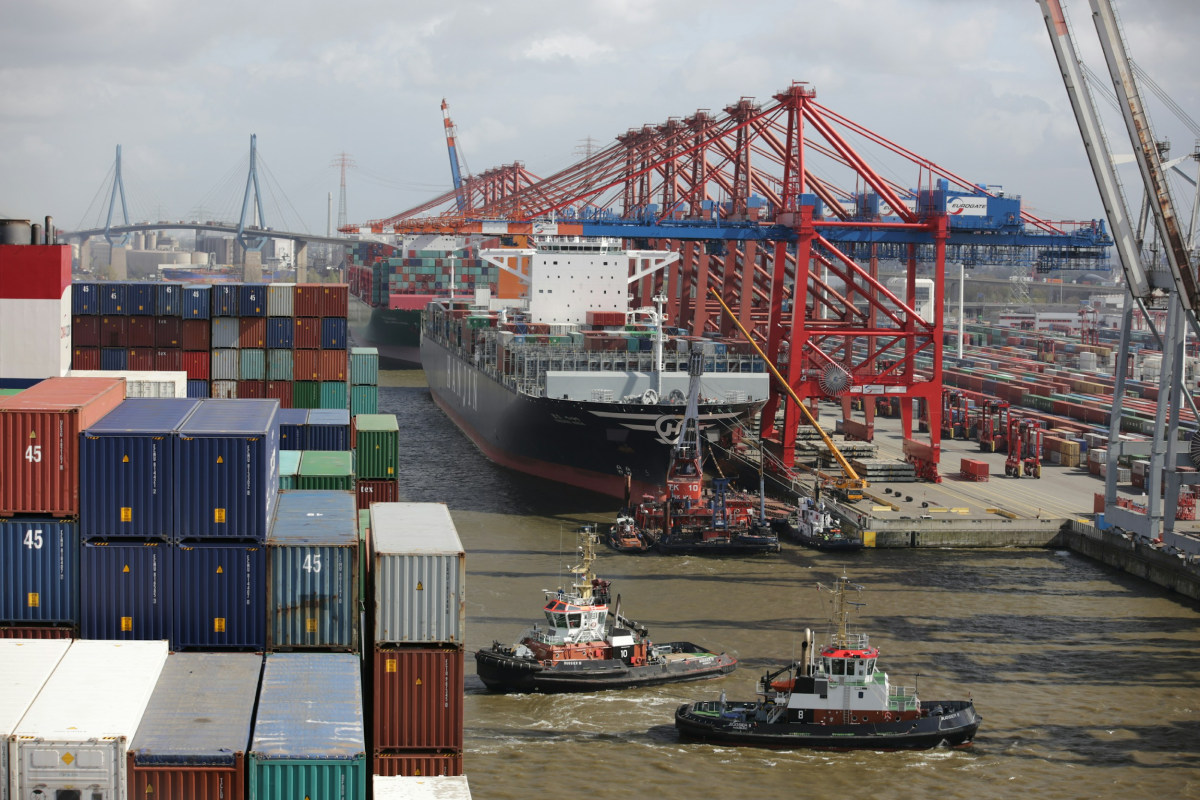Looking for the modern-day warehouse best practices? In today’s fast-paced and competitive business landscape, efficient warehouse management is crucial for the success of eCommerce and retail operations. In this guide, we explore best practices for Warehouse Management, as well as the role of technology and data-driven decision-making in optimising warehouse processes. Let’s dive in!
Warehouse Management Processes Explained
From picking to packing and shipping, each step in the warehouse management process plays a vital role in ensuring accurate order fulfilment and customer satisfaction. Let’s explore some of the key warehouse management processes that are crucial to efficient warehouse operations.
Picking Process in a Warehouse
The picking process is a critical aspect of warehouse operations. It involves gathering items from inventory to fulfil customer orders. A warehouse management system plays a crucial role in optimising the picking process and improving order fulfilment efficiency. Here are some key aspects of the picking process in a warehouse:
- Wave picking: Wave picking is a picking method that involves grouping customer orders into small batches, also known as waves, and picking them collectively. This process improves efficiency and reduces travel time within the warehouse.
- Voice picking: Voice picking is a technology-assisted picking process where warehouse workers receive picking instructions through a voice-controlled system. This hands-free approach improves picking accuracy and efficiency.
- Pick efficiency: Warehouse management systems enable efficient picking processes by determining the most efficient way to gather items from inventory. By analysing order data, system algorithms can optimize picking routes, reducing time and improving operational efficiency.
Packing and Shipping
After the picking process, efficient packing and shipping processes are essential to ensure accurate order fulfilment and timely delivery to customers. A warehouse management system streamlines packing processes, ensuring that customer orders are accurately packed and ready for shipment. System automation, barcode scanning, and packing modules enhance operational efficiency, minimising packing and shipping errors. By integrating with transportation management systems, WMS solutions optimise shipment processes, ensuring smooth logistics and timely delivery.
How is Technology Revolutionising Warehouse Management in 2024?
As technology continues to advance, so do warehouse management systems, enabling businesses to achieve greater operational efficiency and productivity.
Automation in Warehouse Management
One of the key technological advancements in warehouse management systems is automation. Warehouse management systems leverage automation to streamline processes, reducing the reliance on manual labour and improving efficiency. Automation technologies, such as machine learning algorithms, optimize warehouse operations, determining the most efficient picking routes, replenishment processes, and inventory management strategies. By automating repetitive tasks, warehouse workers can focus on higher-value activities, improving overall warehouse productivity.
Role of AI and IoT in Warehouse Management
Artificial intelligence (AI) and the Internet of Things (IoT) are transforming warehouse management systems, providing real-time visibility and control over warehouse operations. AI algorithms analyse warehouse data, providing valuable insights into inventory tracking, demand forecasting, and dock management. IoT devices, such as sensors and RFID tags, enable accurate inventory tracking, ensuring efficient order fulfilment. By leveraging AI and IoT, businesses can optimize warehouse processes, reduce costs, and improve customer satisfaction.
What are the Best Practices for Warehouse Management in 2024?
To achieve optimal warehouse management, businesses should follow best practices that align with industry standards and technological advancements. Our experience with our own test-bed warehouse facility has allowed us to identify the following key points:
Efficient Warehouse Processes
Efficient warehouse processes are essential to streamline order fulfilment, minimise errors, and improve customer satisfaction. Some best practices for efficient warehouse processes include:
- Workflow optimisation: Analyse and optimise warehouse workflows, ensuring smooth processes and eliminating unnecessary steps.
- Employee training: Provide comprehensive training to warehouse staff, enabling them to use warehouse management systems effectively and efficiently.
- Technology usage: Leverage warehouse management system features, automation, and integration with other systems to maximise operational efficiency.
- Continuous improvement: Regularly evaluate warehouse processes, identify areas for improvement, and implement changes to enhance efficiency and productivity.
Role of Barcodes and Barcode Scanners
Barcodes and barcode scanners play a crucial role in warehouse management systems, facilitating accurate inventory control and efficient order fulfilment. Here’s how:
- Inventory control: Barcodes provide a unique identifier for each product, enabling precise inventory tracking and control. By scanning barcodes, warehouse staff can instantly update inventory levels and ensure accurate stock counts.
- Cycle counting: Barcode scanning is an integral part of cycle counting, a process that involves regularly counting a small subset of inventory to ensure accuracy. By scanning barcodes, warehouse management systems can compare the physical inventory with the recorded inventory, identifying discrepancies, and enabling efficient inventory control.
- Accurate pick and pack: Barcode scanners enable users to verify product codes against order or picking route information in real time during the pick and pack process. This not only minimises human error but also streamlines fulfilment, leading to increased efficiency, reduced costly picking mistakes, and improved customer satisfaction.
Importance of Data-Driven Inventory Planning
Data-driven inventory planning is essential for smooth warehouse operations. By leveraging warehouse management systems‘ data, businesses can effectively plan inventory levels, reducing costs and improving customer satisfaction. Here’s why data-driven inventory planning is important:
- Optimised inventory management: Warehouse management systems provide real-time data on inventory levels, demand patterns, and market conditions, enabling businesses to make informed decisions. By analysing this data, businesses can optimise inventory levels, and plan inventory replenishment, avoiding excess inventory or stockouts.
- Efficient order fulfilment: A data-driven inventory planning approach ensures products are readily available for order fulfilment, reducing lead times, and improving customer satisfaction.
Best Practices for Multi-Location Warehouse Management
Managing warehouses across multiple locations introduces unique challenges and complexities. However, with the right approach and best practices, businesses can achieve efficient multi-location warehouse management.
Maintaining Separate Product Counts per Warehouse
Maintaining separate product counts per warehouse is crucial for efficient multi-location warehouse management. Here’s why it’s important:
- Accurate demand forecasting: Separate product counts allow businesses to have accurate visibility into inventory levels at each warehouse, enabling more precise demand forecasting and efficient planning.
- Warehouse-specific inventory control: Each warehouse may have different inventory capacity, regional demand, or customer preferences. Maintaining separate product counts allows businesses to optimise inventory control based on the specific needs of each warehouse, ensuring efficient order fulfilment.
- Inventory visibility: Maintaining separate product counts provides real-time visibility into inventory levels, reducing the risk of stockouts, optimising inventory replenishment, and improving overall operational efficiency.
Balance Between Local and Centralised Control
Striking the right balance between local and centralised control is essential for efficient multi-location warehouse management. Here are some considerations:
- Centralised control: Centralising key aspects of warehouse management, such as inventory management systems, order management, and demand planning, allows for efficient control, visibility, and decision-making across multiple locations.
- Local autonomy: While centralised control offers efficiency, it’s important to grant local warehouses some degree of autonomy. Local warehouses can tailor operations to meet specific regional needs, supply chain requirements, and customer preferences, ensuring operational flexibility and efficiency.
Conclusion
In this guide, we explored key warehouse management processes, from picking to packing and shipping. We delved into how technology, including automation, AI, and IoT, is revolutionising warehouse management in 2024. By adopting best practices and utilising data-driven insights, businesses can boost efficiency, stay competitive and meet customer expectations in the ever-evolving business environment.
Ready to take the leap?
Learn more about our Warehousing solution, and how it might fit your unique business requirements. Want to jump straight into it? That’s fine too. Book your free demo and get started with Warehousing today.






